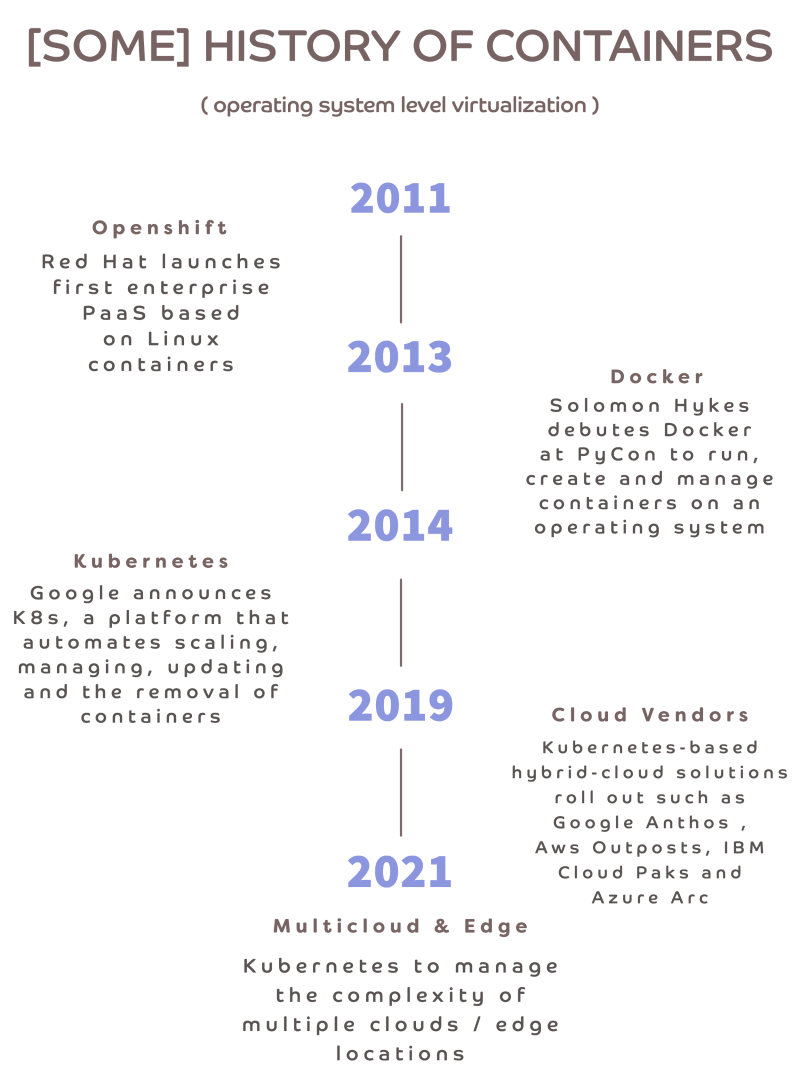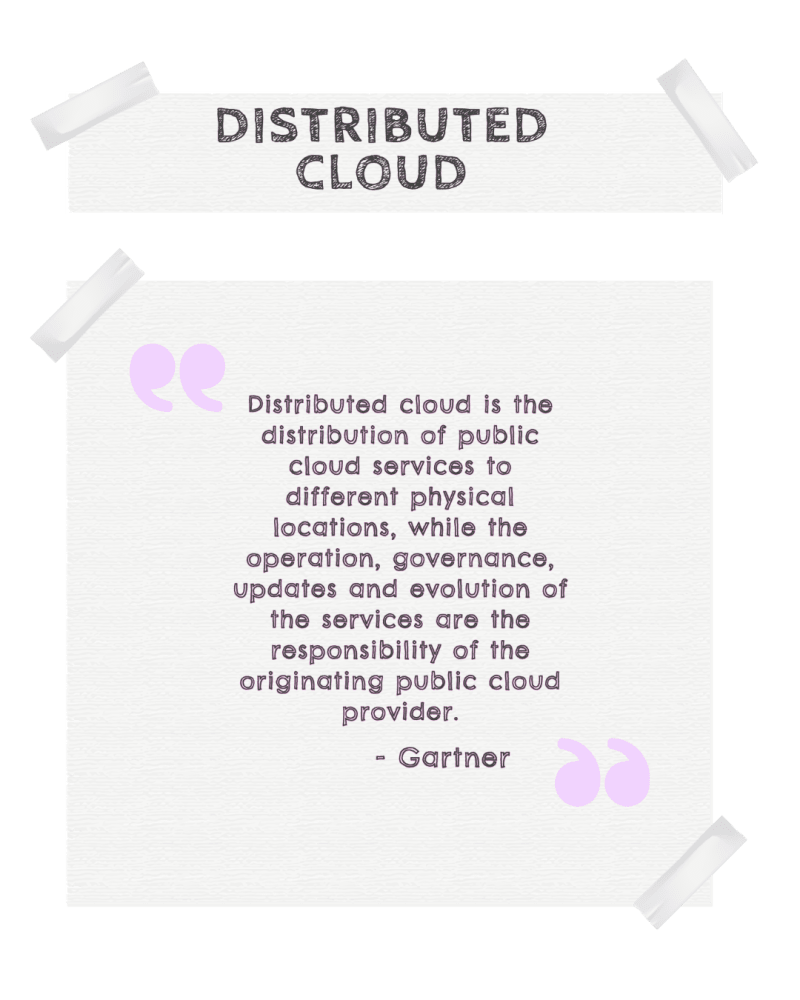This is an infographic I made (with alt text) to show the evolving landscape that led to the distributed cloud model.
The distributed cloud computing model was formally defined by Gartner in 2019 as a new trend in cloud computing. You can see with the Wayback Machine that a lot of descriptions on web pages included distributed cloud starting around 2014.
Distributed cloud is different than distributed computing, which is when a bunch of computers working together as a single system/process in order to maximize computing performance.
The advent of containerization was a key development to the distributed cloud computing model being formally defined recently. Containers provide the ability to encapsulate applications to port across multiple clouds, data centers and edge locations. This is great but there is a lot to manage too along with that.
So what is distributed cloud?
Distributed cloud is the extension of public cloud infrastructure that can be deployed not only on your cloud provider's infrastructure but also at an on-prem location like a data center, another cloud providers' public cloud, a colocation data center or at edge locations. All of these deployments across the various environments are managed from a single control plane.
Kubernetes has been the strongest player in managing and orchestrating containerized workloads by providing the abstraction layer to administrate and deploy regardless of any physical location. This has been especially beneficial with the extensibility required for AI and IoT processes at edge locations.
Credit: Dinaaaaaah
Distributed cloud is the next step coming out of public, private and hybrid cloud computing. With hybrid cloud, the cloud provider managed the public cloud and the customer managed their private cloud environment.
With distributed cloud, the customer uses the control plane to have visibility across locations that they administer and extend cloud services to as a single, distributed cloud. The cloud provider manages the underlying infrastructure, security, updates and operations.
Why is this beneficial?
Traditional cloud computing offered a route for businesses to not have to build up their own infrastructure. Customers can use the cloud vendors such as AWS, Oracle, IBM Cloud, GCP and others who offer "pay for what you use" metered access to compute, networking, DBs, storage, microservices and more to businesses.
But there have been some problems with that.
Sometimes the data center being utilized is not close enough in its physical location for the network performance that is required. Data packets must travel physical distances to transmit.

Credit: Vince Mckelvie
The greater the distance makes for the more time we must wait for those packets to transmit. So how do we shorten that distance for those data packets?
We consider how we approach cloud computing.
In the distributed model with public cloud infrastructure extended across varied physical locations, this lowers latency for better response time with workloads and increased throughput due to lower overall traffic.
The control plane of the distributed cloud model helps to centralize the management of multiple cloud platforms to increase the control businesses have over their IT environments and allows for better organizational efficiency.
Due to the COVID-19 pandemic, a lot of businesses have been looking to improve their digital presence, make more cost-effective IT decisions and unify their cloud strategy on the whole. The action steps to address those areas won't be stopping anytime soon post-pandemic.
It's going to be pretty exciting to see how companies evolve and adopt a more distributed cloud computing model given the advantages that multiple clouds and edge computing provides.
Thanks for reading my intro into distributed cloud! 😊
Credit: GIPHY











Top comments (0)